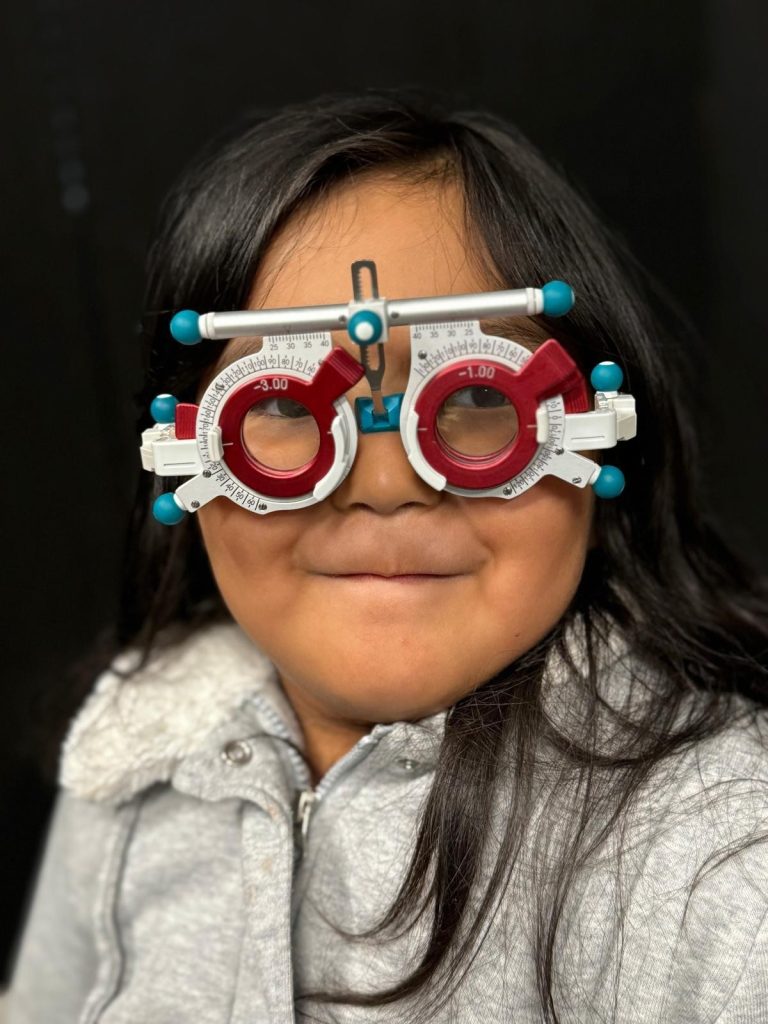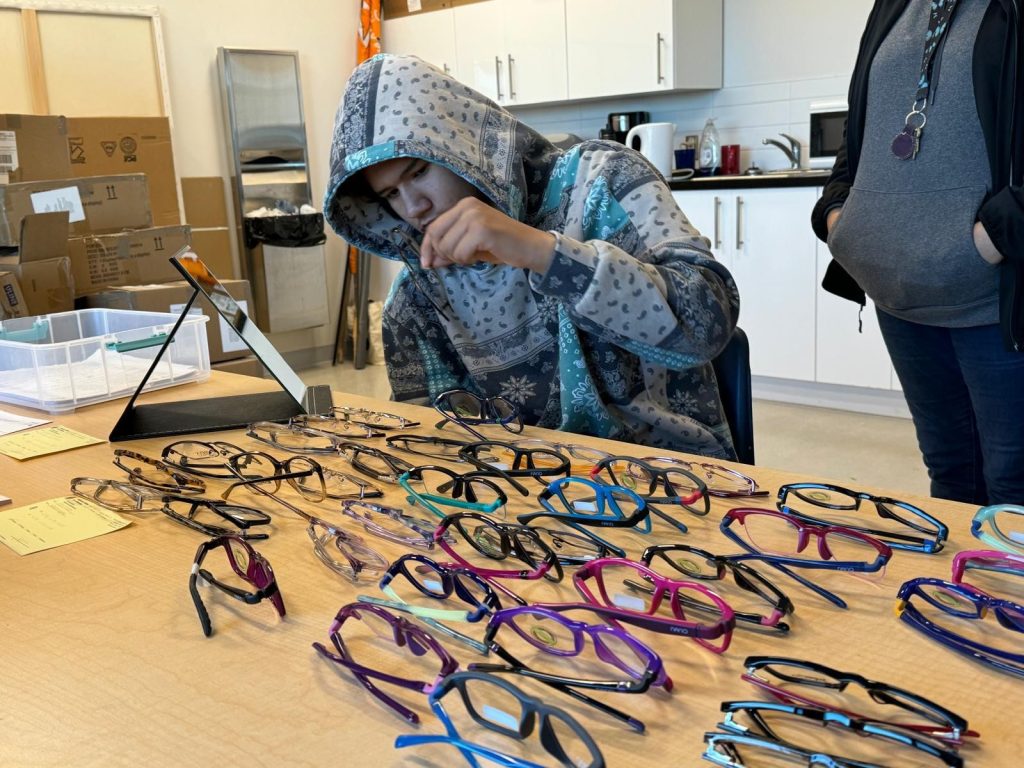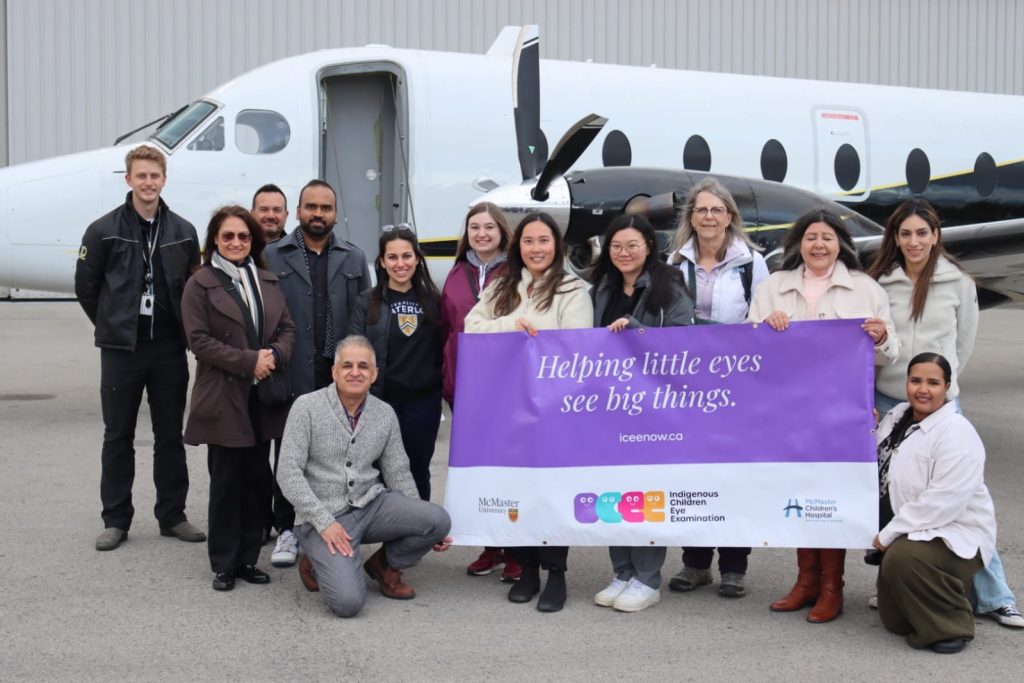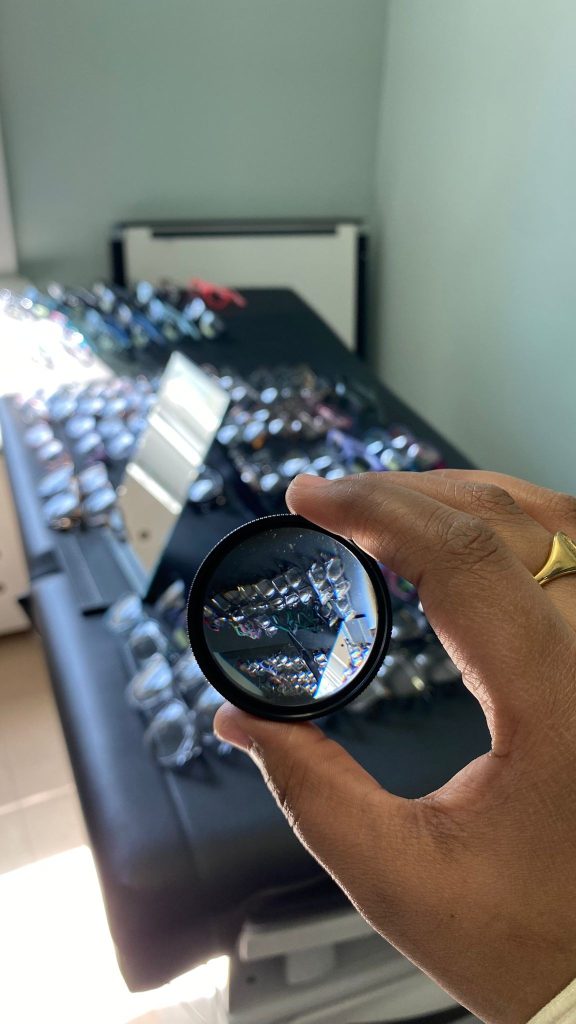Founder: Dr. Kourosh Sabri, MB.ChB., FRCOphth, FRCSC

Eye Care Rooted in Trust, Truth and Reconciliation
In 2015, the Truth and Reconciliation Commission of Canada issued 94 Calls to Action, urging governments and institutions to redress the legacy of residential schools and advance reconciliation. Among these were clear directives to:
- Close the health outcome gaps between Indigenous and non-Indigenous communities;
- Increase the number of Indigenous professionals in healthcare; and
- Provide cultural competency training to all healthcare providers.
Despite these goals, glaring disparities persist—including in eye health.


Vision care for Indigenous children remains one of Canada’s most overlooked healthcare crises. With over 32% of Indigenous people under the age of 15, and thousands living in remote regions, access to basic eye care is limited or nonexistent. In the territories, patients often travel over 900 km just to see an eye doctor. Blindness is six times more prevalent among Indigenous children compared to their non-Indigenous peers. Diabetes, increasingly common among Indigenous youth, further raises the risk of vision-threatening complications.
Recognizing this urgent need, Dr. Kourosh Sabri, a pediatric ophthalmologist and professor at McMaster University, founded the Indigenous Children’s Eye Examination (ICEE) Project in 2019. Together with Dr. Yasmin Jindani, lead optometrist and national coordinator for ICEE, physicians, optometrists, orthoptists, opticians and eye techs carry out ICEE’s simple but powerful mission: Help a child see, and they’ll see a brighter future.
Poor vision in childhood contributes to educational difficulties, social isolation, behavioural issues, and increased risks of depression and suicide. ICEE is addressing this crisis head-on through four key pillars that align directly with the Truth and Reconciliation Commission’s Calls to Action:
“ICEE brings the true meaning of health care to life in the James and Hudson Bay region. Clear vision is not a luxury, it’s a lifeline for children to engage in education, social and physical activities, safety and a new world of possibilities for their future.”
– Sandra Kioke, Senior Vice President and Chief Nurse Executive, Weeneebayko Area Health Authority (WAHA), along Hudson Bay, Ontario
ICEE’s Four Pillars of Impact
- Access to Eye Care in Communities
ICEE provides comprehensive eye exams directly in remote and underserved Indigenous communities. Children who need glasses receive them at no cost to families or communities. So far, over 75% of children examined through ICEE required corrective lenses. Those needing more advanced care are referred and transported to the nearest pediatric tertiary care centre. - Telemedicine Follow-Up
Ongoing care continues through weekly telemedicine clinics. ICEE professionals work with trained community nurses to deliver follow-up care using remote technologies. The project is also developing custom software to improve pediatric vision testing via telehealth. - Training Local Indigenous Youth
ICEE is creating a sustainable model by training Indigenous youth to become community-based eye technicians. These individuals receive hands-on experience at McMaster Children’s Hospital and urban optometry clinics. A curriculum of eight interactive training modules with skill assessments supports their development. In 2022, ICEE recruited the first high school Indigenous graduate from Attawapiskat First Nation in Ontario to be trained as an eye technician. After spending one week in Hamilton with her father to receive training, she returned to Attawapiskat to set up the first remote pediatric eye clinic for the children of her community. - Building Trust, Enabling Broader Care
ICEE builds trust within communities, which opens doors for additional healthcare services. For example, in partnership with ICEE, plastic surgeons are now establishing wound-care clinics in remote First Nations communities along Hudson Bay—an opportunity made possible only after trust in the ICEE team was earned.
A Broken Promise of Universal Healthcare

The Canada Health Act guarantees universal access to necessary healthcare services—but for many Indigenous children, that promise remains unfulfilled. While the Non-Insured Health Benefits (NIHB) program technically covers transportation for Indigenous patients, its bureaucracy, long delays, high costs (up to $4,000 per trip), and the emotional toll of leaving home and family, make it an impractical solution. As a result, many Indigenous children’s vision needs remain unmet.
“Since it began in 2019, the ICEE program has seen over 1,000 children in the James Bay region of Ontario and Northern Saskatchewan. Without the program, these children may have not had a very important eye exam or would have had to travel hundreds of miles to get one. We at WAHA are grateful for the program and all the wonderful staff who have travelled to all our communities, giving our children access to the care that they deserve.”
– Dr. Elaine Innes, Chief of Staff, Weeneebayko Area Health Authority (WAHA), along Hudson Bay, Ontario
A Call for Support: ICEE’s Future Is at Risk
ICEE has the vision, the team, and the trust of the communities it serves. What it lacks is sustainable funding.
Despite its proven impact, ICEE has faced multiple rejections from funding agencies, including the Canadian Institutes of Health Research (CIHR) and the Ontario Ministry of Health. Without new support, current funding will run out within the next 12 months—threatening to halt expansion into other provinces and even limit current services.
How You Can Help
- Donate: Support ICEE directly by visiting www.iceenow.ca.
- Volunteer: If you’re a healthcare professional, connect with Dr. Sabri via the ICEE website.
- Raise Awareness: Use your voice and platform to highlight the ongoing inequities in Indigenous healthcare.
- Commit to Reconciliation: Educate yourself about Canada’s history with Indigenous peoples and reflect on your role in building a more equitable healthcare system.
ICEE is more than an eye care program—it is a step toward reconciliation, built on respect, trust, and action. Together, we can ensure all children in Canada—no matter where they live—can see the future they deserve.
All photos courtesy of ICEE

